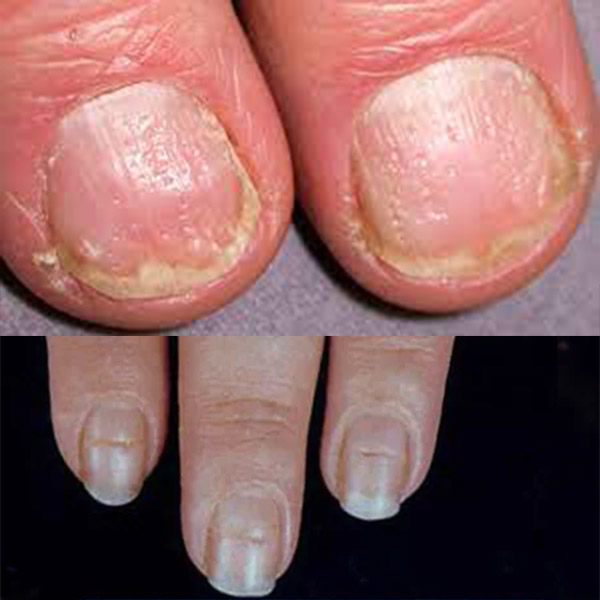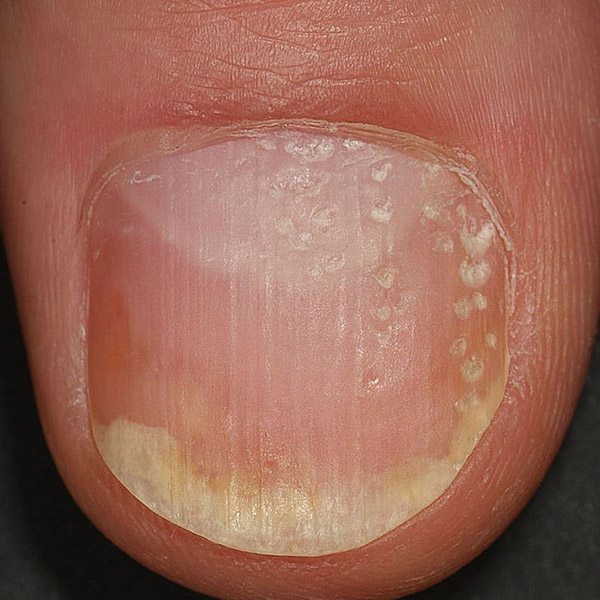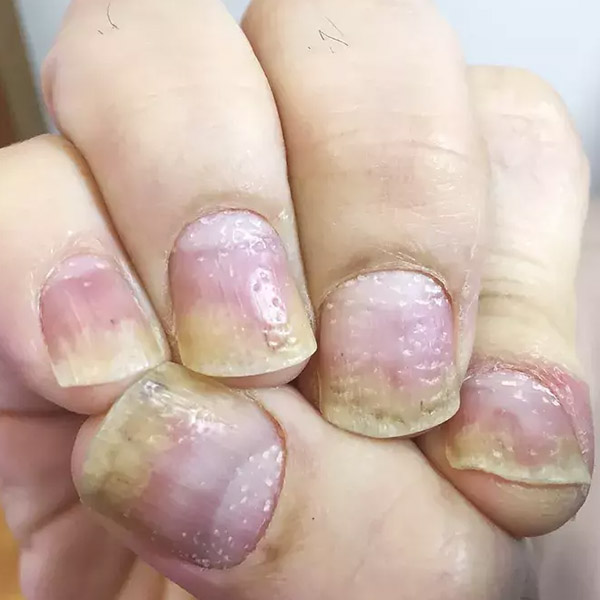Are You Seeing Dents & Holes In Nails? Read This!
Nail Pitting: Here’s What You Need To Know
It turns out that our nails can tell us a lot more about our wellbeing than we know. Whether you’re a nail tech looking out for your clients or just checking in with yourself—this is your sign to take a look at nail texture, because nail pitting is no joke! Keep reading to find out what exactly nail pitting is, plus common causes and how it can be treated or prevented.
What Does It Look Like?
Visible depressions in nails could be alluding to a larger issue, according to Mayo Clinic, and Healthline says it’s a good idea to visit a doctor. Here’s how to spot the signs of nail pitting:
Let clients know to look out for any change in color, like yellow, brown or even red streaks. Notice if they crumble, ridge, separate from the nail bed or if there’s any blood underneath (CreakyJoints).
“Both fingernails and toenails can be affected, and it can affect one nail or all 20 nails,” says Mona Gohara, MD, associate clinical professor of dermatology at Yale School of Medicine (CreakyJoints). However, she notes that even just one affected nail can be too many.

What Is Nail Pitting Caused By?
Let’s get to the root of the problem—Mayo Clinic and CreakyJoints say there’s a possibility it could be one of these common causes:
- Psoriasis: a common and ongoing skin condition that causes infections and rashes, appearing red with silvery scales. Psoriasis can also involve the nails or joints.
- Reactive arthritis (Reiter’s syndrome): a connective tissue disorder which can affect the fingers and toes.
- Psoriatic arthritis: inflammatory arthritis that leads to stiffness, swelling and pain in the joints. It is the overproduction of skin cells, which can result in similar symptoms of psoriasis. Nail pitting is the most common symptom.
- Alopecia areata: an autoimmune condition that causes hair loss on your head and body. Your nails may break easily and dents can form.
Treatments For Nail Pitting:
The treatment for nail pitting is done by way of treating the disorder that caused it, according to Healthline. Some common treatments include: corticosteroid injections into the nail beds, phototherapy, light therapy and vitamin supplements.
Treating nail pitting may be a long-term process—so in some cases, someone dealing with nail pitting may repair the nails cosmetically by scraping, filing or polishing.

Don’t Worry—It Can Be Prevented! Here’s How:
Most of the possible causes of dents and holes in your nails stem from your immune system. Tell your clients the best thing they can do to prevent this is to take care of their nails, as well as their overall health and immunity. VeryWellHealth suggests:
- Eat a diet rich in vitamins and nutrients.
- Stay hydrated.
- Keep your nails short.
- Moisturize your hands and feet to keep your skin hydrated.
- Take immunity and skin vitamins, like vitamins A, B, C and Zinc.
Learn the hottest haircutting trends and most popular color formulas at BTC-U!






